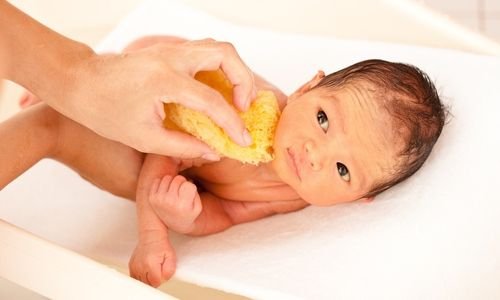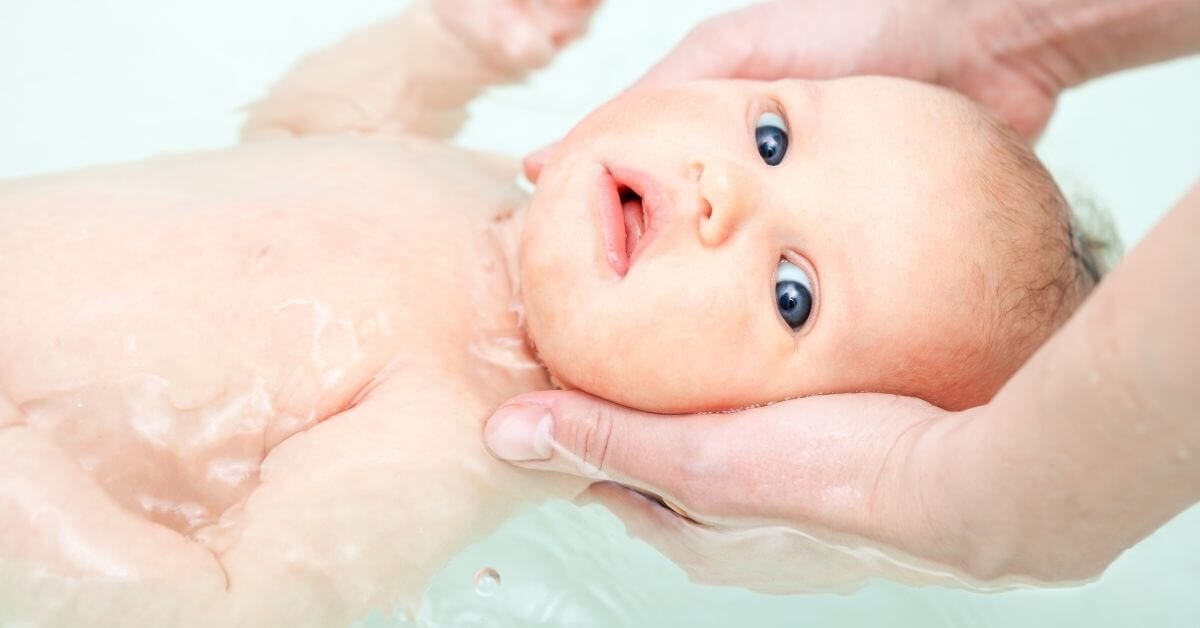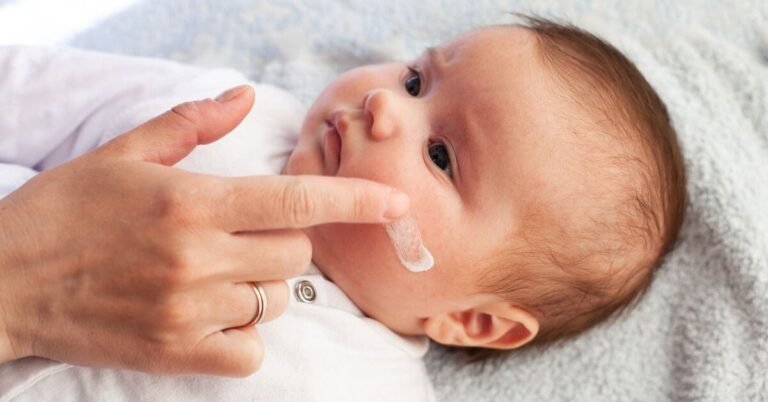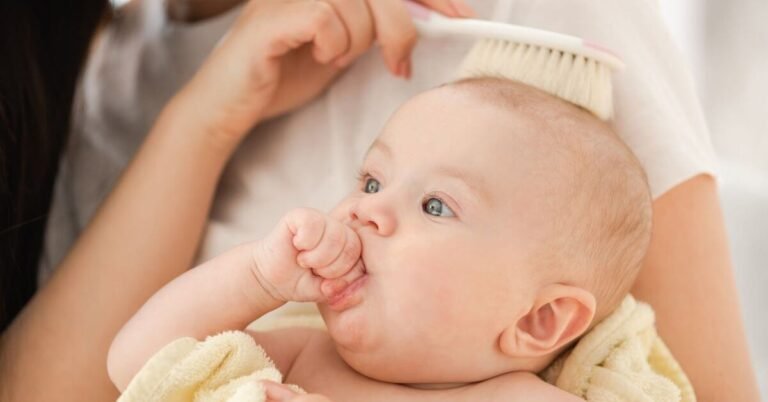How to bathe a newborn and keep him safe during bath time
Bathing a baby is the most heartwarming and bonding experience for Mom and Dad. But how to bathe a newborn for the first time? This may seem a daunting task initially, but after a few times, you and your baby will both enjoy this “Truly Quality time” together.
In this post, we will share some basic tips on making your baby’s first bath as easy as possible. We’ll answer common questions new moms usually have about bathing a newborn.
When should a newborn have a first bath?
According to the World Health Organization (WHO), babies should not take their first bath until 24 hours after birth.
Several reasons exist for delaying a baby’s first bath.
Dry skin: Vernix coats the baby’s skin before birth. It provides natural moisture to the skin and has antibacterial properties. To prevent newborns’ delicate skin from drying out, you should leave vernix on their skin for as long as possible.
Breastfeeding success: Bathing a baby too soon can interrupt skin-to-skin contact, bonding between mother and child, and the chance of a successful breastfeeding start.
Blood sugar and body temperature: Babies who are bathed right away are more likely to become cold and suffer hypothermia. What’s more, even a small stress like an early bath can trigger a blood sugar drop in some babies.
Can you give baby a bath before umbilical cord falls off?
How to bathe a newborn baby (with umbilical cord)? Start by giving your baby a sponge bath until the umbilical cord falls off. This is where you lay your baby on a towel and simply wash your baby with the help of cotton balls and a washcloth. You do not submerge the baby in bathwater as you must keep the baby’s umbilical cord stump dry and clean. By doing this, it will dry and heal quicker and usually fall off at 1 to 2 weeks after birth. Mind, for some babies, this can take up to three weeks.
In the next video, you can see HOW TO SPONGE BATH A NEWBORN?
How to bathe a baby bathing step by step
When you are ready, undress your baby and cover him from the waist down with a towel to help him stay warm. Knowing how to clean these specific areas of a baby’s body is important. You do this before you put the baby in the bathtub.
Face and neck
Use a washcloth or cotton balls to gently clean the baby’s eyes, face, and neck folds. Pay extra attention to drying the creases in the neck. Never try to clean the inside of your baby’s ears with a cotton swab; you may accidentally scratch or damage the eardrum.

Baby’s hair
Use a tiny amount of shampoo to wash the baby’s hair. Once or twice a week is enough. A washcloth on the baby’s forehead keeps shampoo out of the eyes. There is a delicate area on your baby’s skin called the soft spot, and it is safe to gently wash it as part of the bathtime routine. Then, gently towel dry the baby’s hair. Remeber,if you bathe your baby too often, their skin will become dry, causing their sebaceous glands to produce too much oil, leading to cradle cap.
Upper body
Carefully clean the baby’s upper body, arms, and fingers. Clean the umbilical cord with some cotton swabs dipped in alcohol or hydrogen peroxide. Gently dry. Turn baby on her tummy to wash baby’s back and buttocks.
Genital area
How to bathe a newborn baby girl? With baby girls wash the private parts from front to back. Clean any secretions between the labia and vulva and diaper cream residue. Avoid using soap on the genitals, as this may cause irritation.
How to bathe a newborn boy? If you have a baby boy clean beneath the scrotum and around the base of your boy’s penis but don’t try to pull back the foreskin. It will take a few years before the foreskin separates from the underlying penis and can then be retracted. After that, gently dry your baby.
Clean the baby’s umbilical cord stump daily and keep it as dry as possible to prevent infection. Inform your doctor if the naval area becomes red, swollen, or produces pus.
How to bathe a newborn in the bathtub?
After the umbilical stump falls off and the area has healed, your baby is ready for a proper bath in the tub.
First of all, you will need a warm, draft-free room when bathing your baby. Newborns have trouble regulating their body temperature, and their body temperature can drop quickly. Secondly, you should always stay with your baby when he/she is having a bath. When you forget something, rather wrap your baby up in a towel and take him with you than leave him unattended. Thirdly, be well prepared and have the following baby bathing essentials at arm’s length.
What is the best way to bathe a newborn?
- Fill the bathtub with 2 to 3 inches of water and check the baby bath temperature
- Make sure you have everything you need nearby.
- Lay an open towel on the dressing table or a chair.
- Undress your baby.
- Put your arm under your baby’s head and get a firm grip on his upper arm.
- On the other arm, you hold the upper leg.
- Lift the baby and gently introduce your baby to the water.
- While your baby’s head rests on your arm, you can wash your baby with your free hand.
- When you are finished, lift your baby out of the tub and wrap him in a clean towel.
- Now you can dry your baby carefully and dress him.
Protect your newborn baby from potential water hazards with these tips from the American Academy of Pediatrics.
Best time for bathing a baby
Actually, there is no best time. You can do this any time during the day if you feel you have the time and you will not be disturbed. Some suggest not bathing a baby when he is hungry or immediately after a feed. Hungry babies can be restless, and bathing after a feed may make the baby throw up some milk. However, many moms find that bathing and then feeding before bed help their baby relax and sleep more easily.
Related post: How to choose the best baby changing table
What to wash a newborn with?
When can I use soap on my newborn? Washing newborns with only water is just fine because the infant’s skin is delicate and may not tolerate the additives usually present in most soaps. Newborns’ skin at this stage is immature and still developing a protective barrier. For this reason, we must keep exposure to chemicals to a minimum.
But sometimes soap is necessary to remove secretions such as urine, feces, sweat, and saliva. When left on your baby’s skin for too long, these secretions may cause the skin barrier to break down and cause a rash (diaper rash) or an infection.
Use soap minimally, as you don’t want to disrupt the skin’s pH or cause the skin to dry out. Choose only mild, neutral-pH soaps without additives. Rinsing the soap immediately from the skin will also help to minimize exposure.
Here are 5 baby body washes that score best on the Environmental Working Group Skin Deep Database. For these baby soaps to get the EWG VERIFIED mark of approval, they meet the EWG’s strict health criteria.
How often do you need to bathe a newborn?
If you wonder whether it is necessary to bathe your baby every day, the answer is no. Especially newborns do not need a bath daily. According to the American Academy of Pediatrics, it is enough for a baby to have a bath two to three times a week until the baby’s first birthday. Though it is important, you clean the diaper area carefully at each change.
How do I choose a baby bathtub?
There are many different types of bathtubs for babies. Some you can place on the sink, and others are made to grow with your baby. When choosing a baby bathtub for your newborn, look for one that is made of thick plastic. For newborns, a tub with a hammock-style sling is ideal. A beautiful example is The First Years sure comfort deluxe newborn to toddler tub with a mesh sling to securely hold your newborn while you give him a bath. When your infant grows, you can take away the insert, and the tub is spacious enough for a toddler up to 25 lbs.
Don’t forget to check out our post: What is the ideal baby bath temperature?





